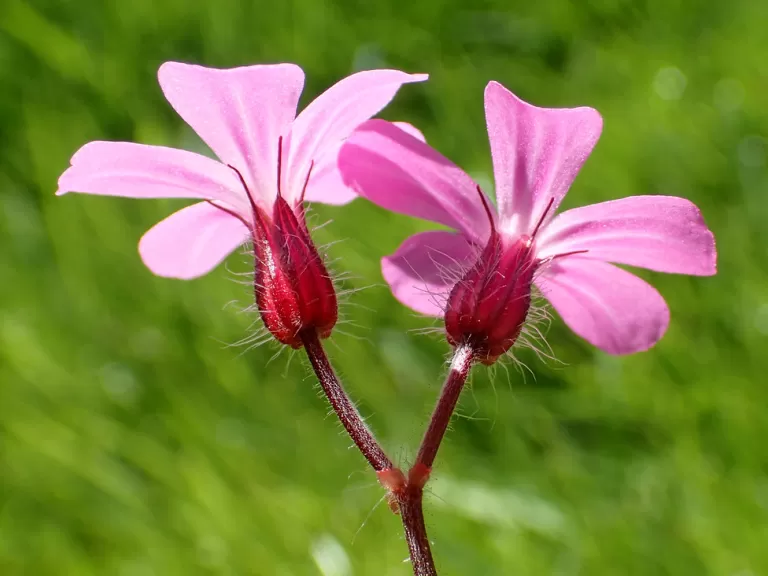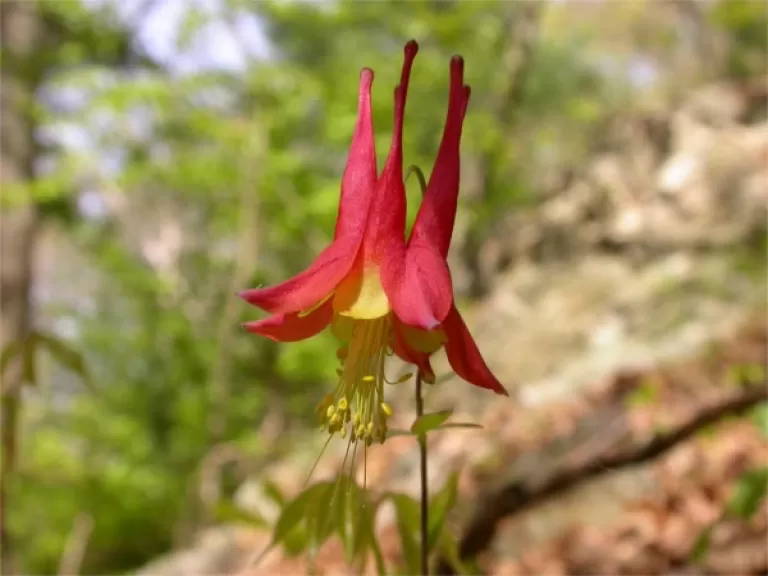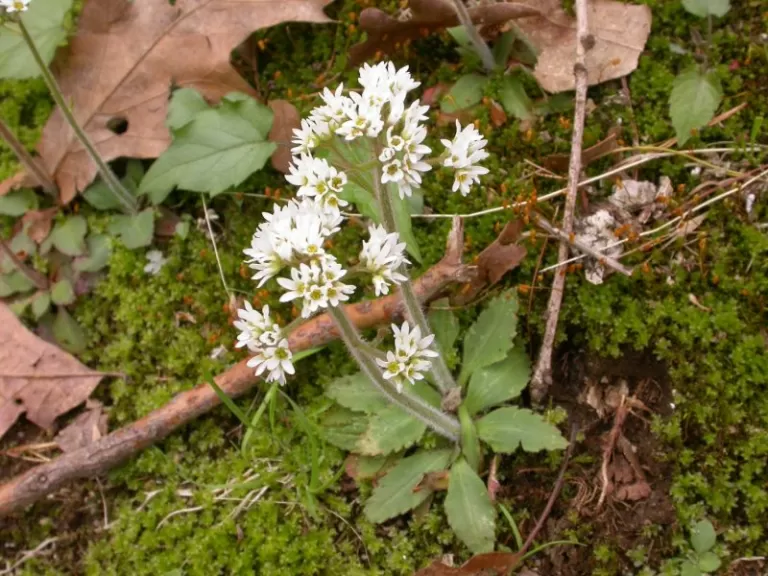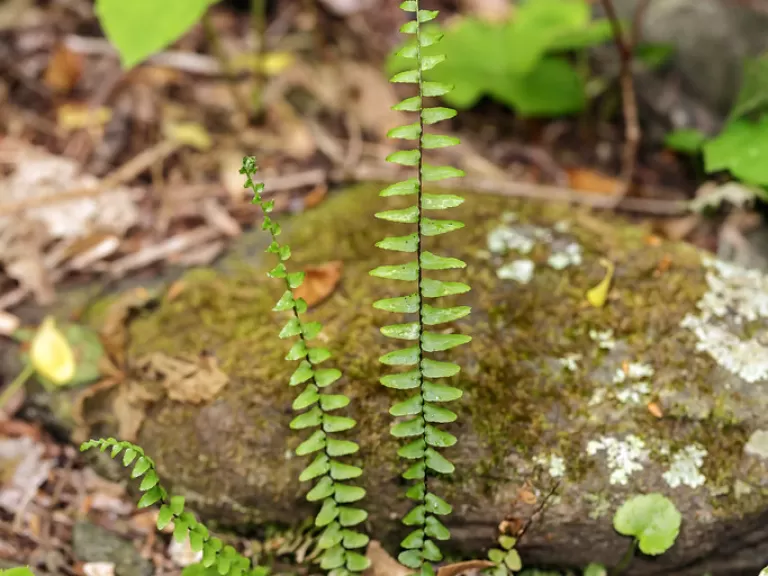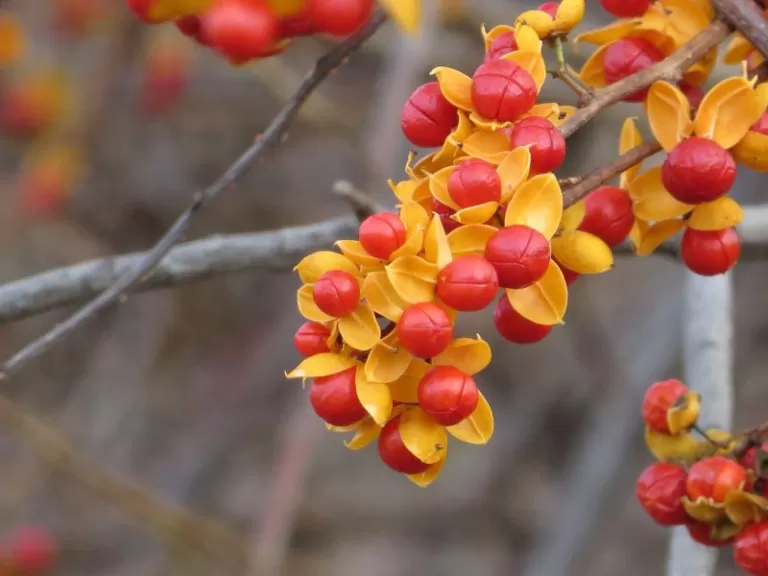Rocky Outcrop
Standing at post 5 puts you between the red maple swamp and an acidic rocky outcrop that is home to some of the rarer plants found at Wolbach Farm. Holdouts of more uncommon, fickle species can be found here as the land around rocky outcroppings were spared from grazing or agricultural uses.
Plants found here such as Roberts geranium and red columbine thrive on moist slopes and crevices. You may also spot early saxifrage, ebony spleenwort, or fragile fern. The invasive Asian bittersweet is also prevalent at Wolbach Farm.
